Health
How close can you get with masks on? Your mask questions answered – CBC.ca
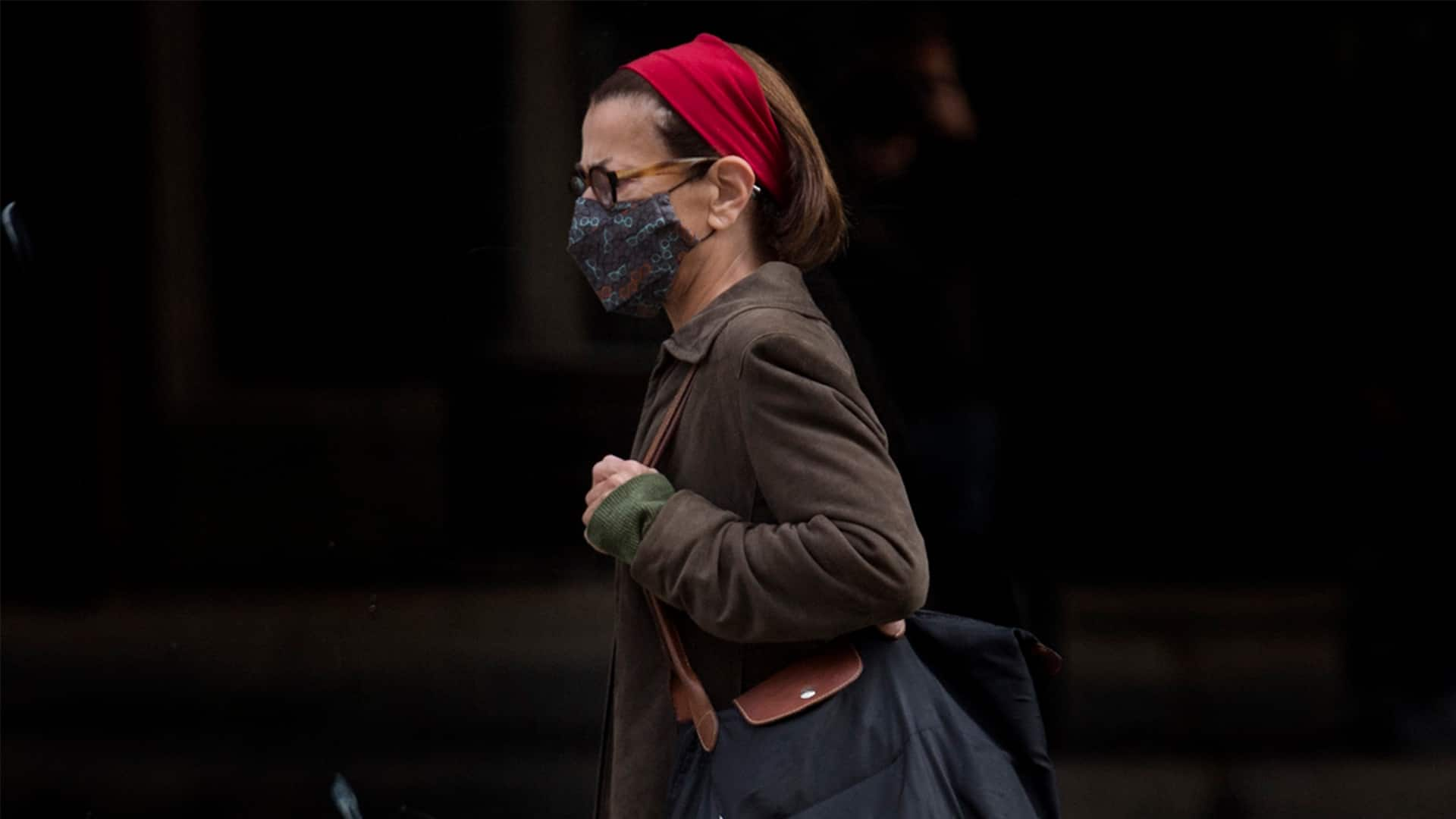
We’re answering your questions about the pandemic. Send yours to COVID@cbc.ca, and we’ll answer as many as we can. We publish a selection of answers online and also put some questions to the experts during The National and on CBC News Network. So far, we’ve received more than 55,000 emails from all corners of the country.
Most of us are wearing masks a lot, and winter is approaching. That’s led CBC readers to send us new, more detailed and more seasonal questions about wearing masks to protect against the spread of COVID-19. We checked in with experts for the answers. (You can also check out our previous mask FAQs, including questions such as: Is heat needed to clean reusable masks? Can I use a mouth shield instead of a mask? And can I reuse disposable masks?)
If we’re wearing masks, do we still have to distance?
Yes, distancing is still required, as regular medical and non-medical masks only reduce the number of particles from your nose and mouth. They don’t eliminate them, says Dr. Anand Kumar, associate professor of medicine at the University of Manitoba in Winnipeg. (Respirator masks such as N95s do a much better job of filtering particles.)
While most masks reduce particle spread by about 80 per cent, “that leaves 20 per cent of particles still going out. How far? Nobody really knows,” he told CBC News.
But the greater the distance, the greater the protection, whether you’re wearing a mask or not. Doubling the distance between you and another person reduces the viral particles reaching you about eightfold, Kumar said. And wearing a mask should cause the larger, most-infectious particles to drop close to an infected mask wearer before they can reach another person.
So, how close can you get if you’re both wearing masks?
There’s no definite answer, says Martin Fischer, an associate professor of chemistry at Duke University in Durham, N.C., who has studied how to measure the effectiveness of different masks. That’s because the risks depend on so many factors, such as how well the masks worn by each person stop particles and how long you interact.
Kumar and other experts note that approaches such as masking and distancing should be thought of as “layers” of protection that are “worn” together and aren’t replacements for one another.
“It’s not one or the other … it’s as many as you can do that gives you maximum protection.”
Ian McKay, an Australian virologist, illustrates this using the analogy of Swiss cheese — the virus can make it through the holes in some slices, but if you have many layers, it won’t get through the whole block of cheese.
A new version with colour & division inspiration from <a href=”https://twitter.com/UQ_News?ref_src=twsrc%5Etfw”>@uq_news</a> and strict mouse design oversight by <a href=”https://twitter.com/kat_arden?ref_src=twsrc%5Etfw”>@kat_arden</a> (ver3.0).<br>It reorganises slices into personal & shared responsibilities (think of this in terms of all the slices rather than any single layer being most important) <a href=”https://t.co/nNwLWZTWOL”>pic.twitter.com/nNwLWZTWOL</a>
—@MackayIM
Is it safe to kiss someone if we’re both wearing masks?
That’s probably not a good idea.
Canada’s chief public health officer has advised Canadians to skip kissing and wear a mask when getting intimate with a new partner to protect yourself from the coronavirus.
If you lean in very close — like you would for a kiss — you could unintentionally exchange droplets from breath around the sides of a mask, explained Colin Furness, an infection control epidemiologist at the University of Toronto, which could lead to transmission of the virus.
With many parts of the country experiencing increased community transmission, Sumon Chakrabarti, an infectious disease physician with Trillium Health Partners in Mississauga, Ont., said it is best to follow local public health guidelines, which include minimizing close contact with people outside your immediate household.
WATCH | Doctors answer questions about what activities and places are higher risk for COVID-19
Two infectious disease doctors answer viewer questions about high-risk settings for COVID-19 transmission and how data about transmission could help people make decisions about how to live their lives. 6:11
Is there any evidence that masks protect the wearer at all?
It depends on the mask.
There are two main categories of masks:
-
Respirators such as N95s, which do protect the wearer and are therefore worn by medical staff who treat COVID-19 patients.
-
Regular surgical or non-medical masks, which are designed mainly to stop particles exhaled from your nose or mouth from getting too far from you.
Studies show that those regular masks are very good at filtering particles leaving the mouth and nose of the wearer, as they tend to block larger particles more effectively. That’s how they protect the people around you if you’re infected.
But yes, there is some evidence that they can protect the wearer, too, including a metanalysis of 172 previous studies published this spring.
Lab experiments suggest they can block roughly 80 per cent of viral particles from entering your nose and mouse, and that can reduce the dose and therefore the severity of COVID-19 infection if you do become infected.
There’s even better evidence that when most people wear masks, everyone is protected.
“We’re seeing, as we put all the data together, that masks can be broadly helpful in reducing transmission from person to person outside of health-care settings and even just in the general community,” said Dr. Suzy Hota, medical director for infection prevention and control at the University Health Network in Toronto.
At 🇺🇸 state level, the % of people knowing someone with <a href=”https://twitter.com/hashtag/covid19?src=hash&ref_src=twsrc%5Etfw”>#covid19</a> symptoms vs. % wearing masks has a tight negative correlation.<br>Other drivers may be involved, but this is compelling.<br><br>A powerful argument for wearing a mask, in visual form | <a href=”https://twitter.com/_cingraham?ref_src=twsrc%5Etfw”>@_cingraham</a> <a href=”https://t.co/ClnbCs2Xp7″>https://t.co/ClnbCs2Xp7</a> <a href=”https://t.co/Es6FSI2PDE”>pic.twitter.com/Es6FSI2PDE</a>
—@dawnbazely
Which spews more droplets, my nose or my mouth?
That depends on whether you’re breathing, talking, sneezing or coughing. Shouting, cheering and singing all produce more droplets than breathing or talking, and those particles come mainly out your mouth. And coughing, mainly from your mouth, can propel droplets more than two metres.
But sneezing can propel particles, mainly from your nose, up to eight metres, studies show.
On the other hand, it’s not just the quantity of droplets that matters but also how infectious they are. Studies of COVID-19 patients have found higher amounts of virus in the nose than in the throat.
WATCH | Can I leave my mask under my chin when not using it?
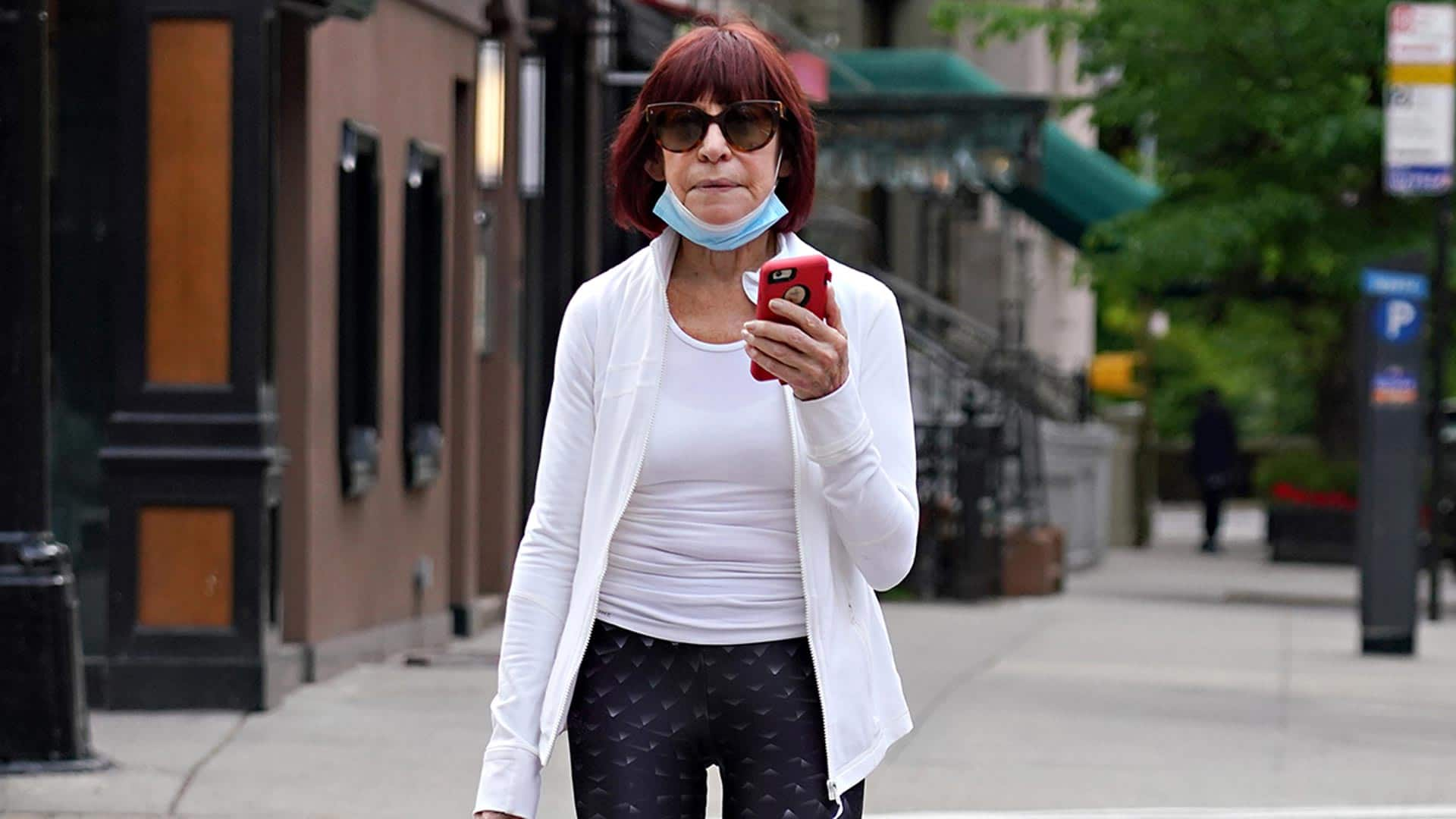

An infectious disease physician answers viewer questions about the COVID-19 pandemic including whether it’s safe to pull a mask around the chin when it’s not in use. 2:18
So, can I wear my mask under my nose?
No. Wearing a mask below your nose defeats its purpose.
That’s because masks and face coverings are supposed to reduce coronavirus-spreading respiratory droplets, and the virus can both exit (see previous question) and enter via your nose.
In places where masks are mandatory, policies usually specify that they need to cover your nose. For example, Quebec’s regulation says a mask needs to cover the nose and mouth while Ontario’s says it needs to cover the mouth, nose and chin.
The only thing less effective than wearing your mask below your nose is <a href=”https://twitter.com/Twitter?ref_src=twsrc%5Etfw”>@Twitter</a>’s “report fake account” button<br><br>Remember: misinformation exists, but so does reliable info about properly wearing masks via <a href=”https://twitter.com/GovCanHealth?ref_src=twsrc%5Etfw”>@GovCanHealth</a> <a href=”https://twitter.com/ONThealth?ref_src=twsrc%5Etfw”>@ONThealth</a> & your public health unit. <a href=”https://t.co/5mvngDeqfr”>https://t.co/5mvngDeqfr</a> <a href=”https://t.co/blcH3XyVsj”>pic.twitter.com/blcH3XyVsj</a>
—@ottawahealth
Does a winter scarf, neck warmer or balaclava count as a face covering?
Generally, yes, they’re permitted as face coverings under mandatory mask bylaws as long as they cover the required parts of your face (see previous question).
But are they as effective?
Newfoundland and Labrador’s health ministry notes that scarves and other cloth face coverings may be less effective than non-medical masks. Fischer’s study in September showed that many scarves, balaclavas, bandanas, neck fleeces and neck gaiters are not very effective at blocking respiratory droplets compared to masks as they’re too thin or porous. In fact, some neck fleeces and neck gaiters tend to break large droplets into smaller ones, creating more particles that stayed airborne longer and potentially increasing viral transmission.
Scarves and neck warmers also generally don’t meet the recommendations that the Public Health Agency of Canada has for face coverings, such as fitting securely to the head with ties or ear loops and being made of at least two layers of tightly woven material fabric, such as cotton or linen.
Toronto Public Health recommends that when wearing a face covering that doesn’t cover the mouth, nose or chin without gaps a face mask should be worn underneath.
WATCH | Are you making these face mask mistakes?
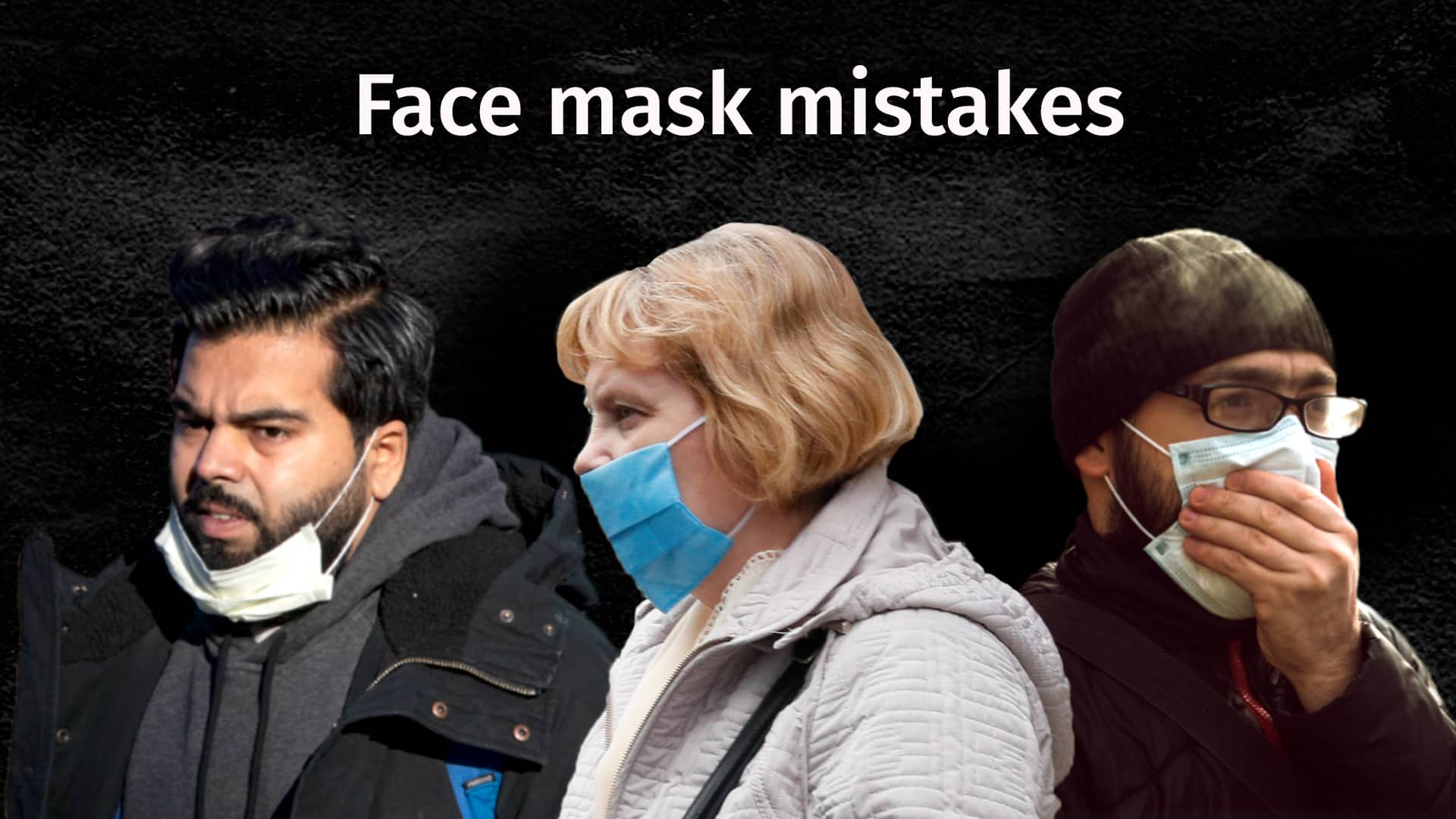

A face mask is meant to limit the spread of COVID-19. But if it slips below your nose, hovers around your chin, or you touch the outside with your hands, medical experts say that might be riskier than not wearing one at all. 3:56
Is a damp or frozen mask less effective?
Multiple experts we talked to said it’s not really known whether masks are less effective when damp or frozen.
However, when it comes to N95 masks, the electrostatic filter stops functioning if it gets soaking wet, says Dr. Allison McGeer, infectious diseases specialist at Toronto’s Mount Sinai Hospital.
Regardless of whether filtering abilities are affected, damp or frozen masks tend to be more difficult to breathe through, notes Conor Ruzycki, a University of Alberta doctoral candidate in Edmonton who has done research on the filtration abilities of homemade masks.
Wet masks can also provide an environment for bacteria to grow, he and other experts said.
“For these reasons, it’s a good idea to replace a wet or frozen mask with a fresh and dry one,” added Ruzycki, who volunteers with Masks4Canada, a group that advocates for mandatory mask laws.
“With winter coming, consider carrying an extra mask or two to change into if you find your mask freezing up or becoming water-logged.”
WATCH | How to wear and care for masks
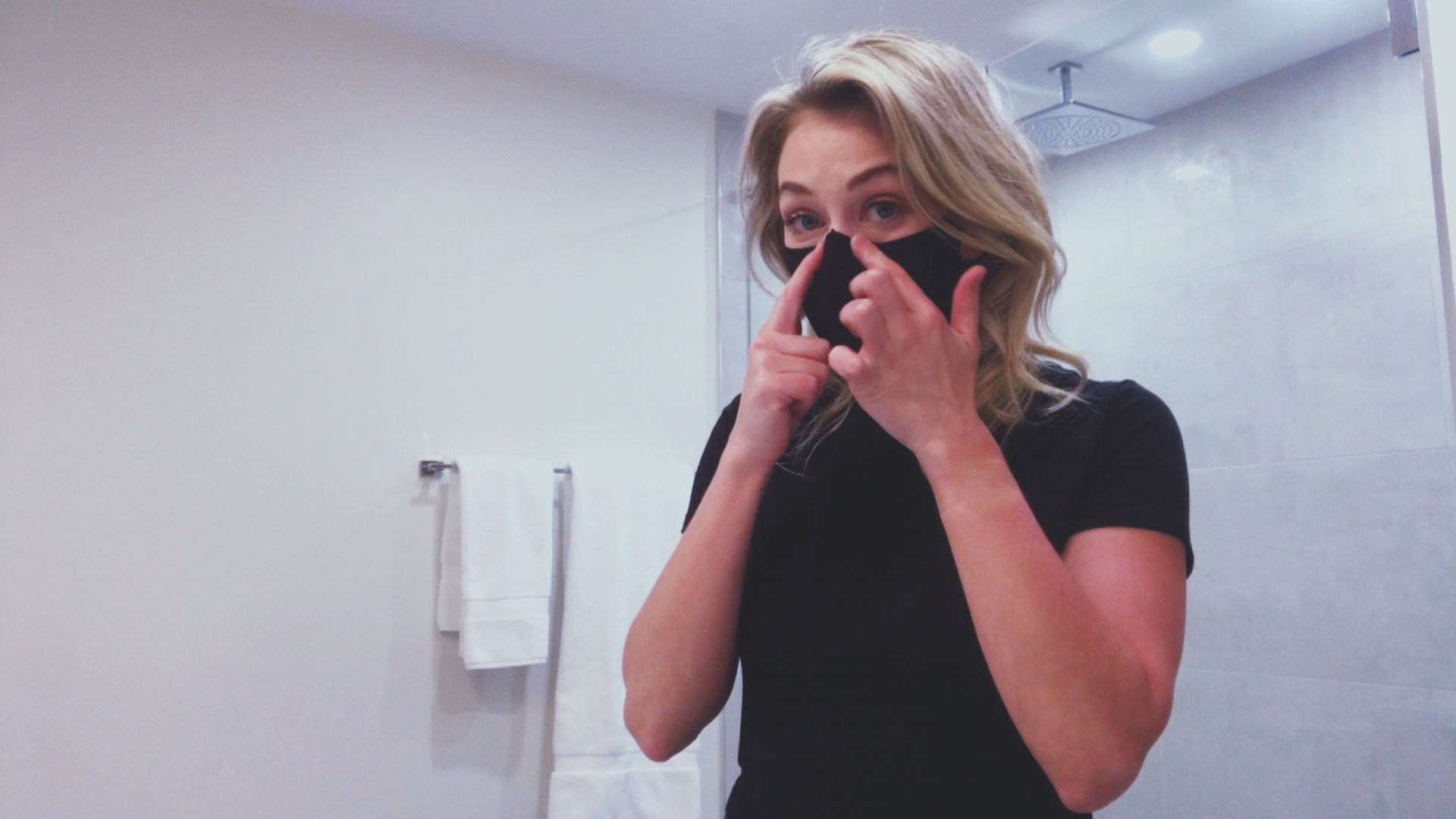

Glasses fog up? Not sure how often to wash the mask? CBC’s Tina Lovgreen demonstrates how to wear a mask safely. 1:51
Is it safe to share cloth masks?
Yes, if they’re clean.
“Sharing masks is not risky if they are well washed,” said Furness. Health Canada recommends washing them on a hot cycle and then drying thoroughly.
But even with good laundering, Dr. Sumon Chakrabarti noted that masks are pretty intimate items to be swapping with others.
“Think about it like sharing well-washed underwear,” Chakrabarti said. “Safe, yes. Gross, also yes.”
As masks are so widely available now, he said it’s a better option to use your own.
Is it true that masks can make you sick?
That’s unlikely if you keep your masks clean and change them as needed, experts say.
But if you allow them to get damp and don’t change or clean them, then wear them for a long time, bacteria can grow in them (but not viruses, which can’t reproduce outside the body.)
That can cause masks to get smelly but wouldn’t necessarily be harmful, says Kumar.
However, Furness has previously said that studies have found that wearing the same mask all day can lead to an increase in respiratory infections.
In general, public health officials recommend changing masks when they become damp or dirty.
Some CBC readers have also written in worrying that wearing masks could reduce oxygen levels or cause a buildup of carbon dioxide, but experts say there’s no evidence that they can do that.
WATCH | Masks and oxygen levels
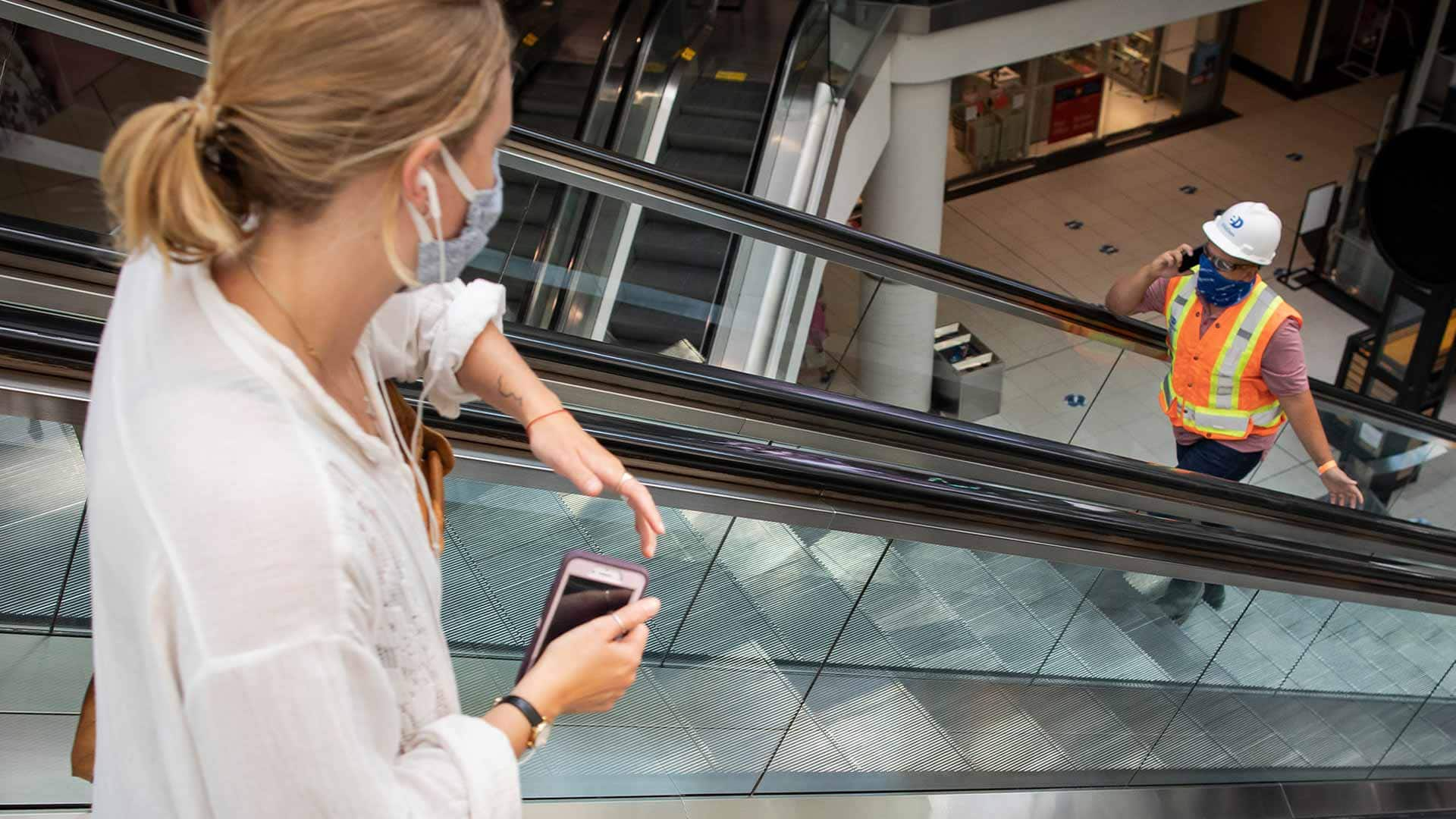

An infection control specialist answers questions about the COVID-19 pandemic, including whether wearing a mask affects your oxygen levels. 3:32
Is my choice not to wear a mask protected under the Charter of Rights and Freedoms?
It’s not so straightforward. Cara Zwibel, a lawyer for the Canadian Civil Liberties Association, says that an argument could be made under freedom of expression.
“Like with any piece of clothing, there’s this argument that people use what they wear and their appearance to express who they are,” said Zwibel.
But when it comes to charter rights, the government can restrict them if they do so in a way that is reasonable and justified.
“Given the circumstances of the pandemic and the importance of the objective of curbing the spread of COVID-19, a mere preference not to wear a mask likely would not be protected,” said Joanna Baron, executive director of the Canadian Constitution Foundation in Calgary. a non-profit organization that argues charter cases in court.
For someone who says they are unable to wear a mask for medical reasons, Zwibel says, it depends on the situation, but a case could be made under equality rights.
“If someone was treated differently or couldn’t access a government service because of a medical issue that precluded them from wearing a mask, then there would be a potential equality issue.”


As a business owner or retail employee, how should you approach customers not wearing a mask?
First, you should approach the customer and ask if they have a medical reason for not being able to wear a mask. If they say they do, you’ll have to take their word for it.
“A mere statement by an individual that they qualify for an exemption from a mandatory mask order is sufficient. They do not need to produce medical proof,” Baron said.
The Ontario Human Rights Commission recommends everyone involved should be flexible in the situation and explore whether individual accommodation would suffice.
What that accommodation might look like would vary based on the type of business or service, the medical reason precluding the customer from wearing a mask and the current government directives during the pandemic. It could be something as simple as a curbside pickup arrangement.
WATCH | How to stay safe from COVID-19 on a plane
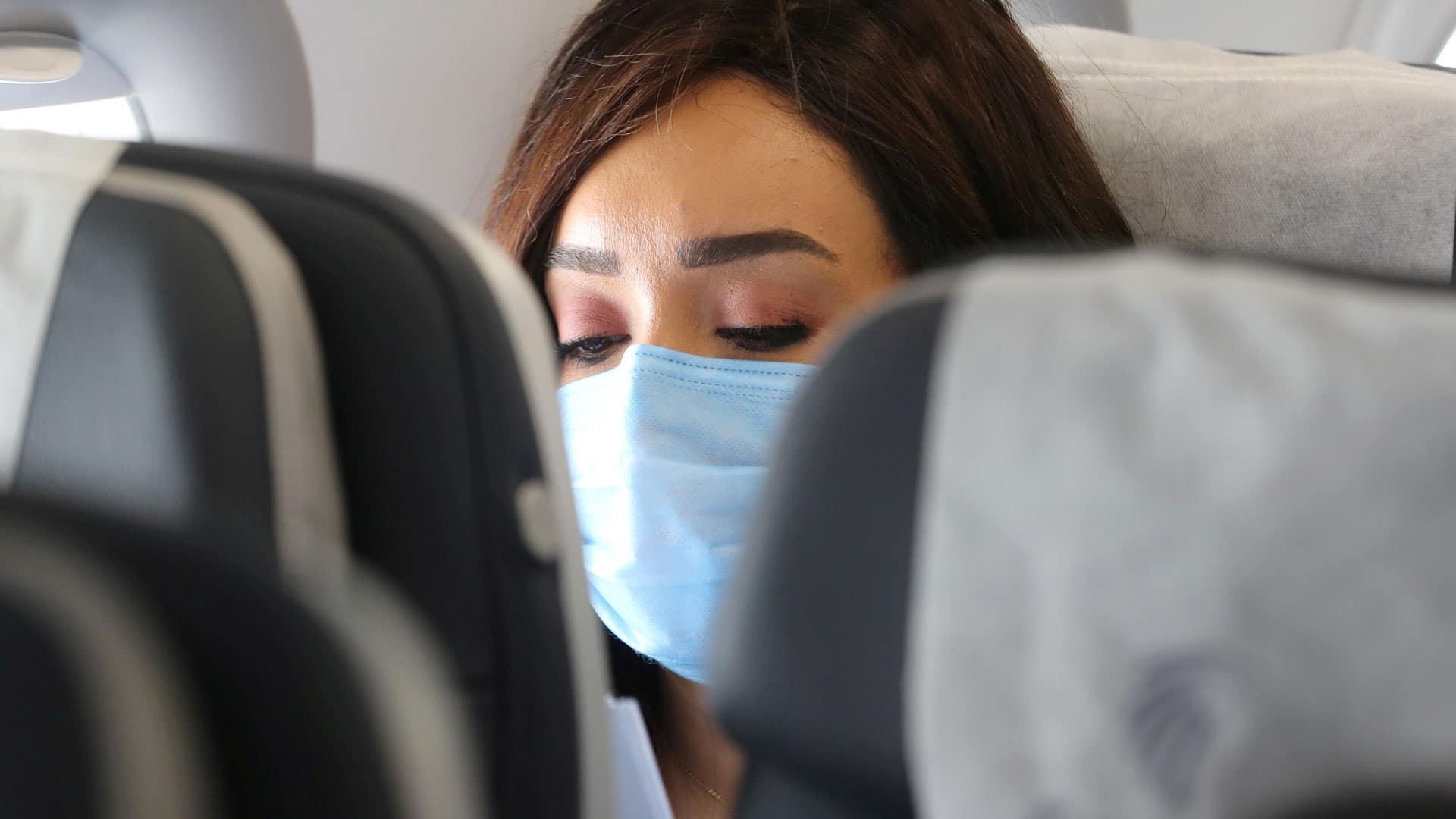

An infectious disease specialist and a respirologist answer viewer questions about the coronavirus pandemic including how to reduce the risk of getting COVID-19 on an airplane. 4:29
What’s the best mask to wear on a plane?
For any setting, including an airplane, the Public Health Agency of Canada recommends any mask that covers the nose and mouth, can be secured to the head comfortably, allows for easy breathing and does not require frequent adjustment.
According to the Canadian Air Transport Security Authority website passengers must wear coverings that are properly secured and cover the mouth and nose and are made of at least two layers of tightly woven fabric, such as cotton or linen, which most on the market are.
Here’s what types of face coverings you don’t want to show up to the airport with:
-
A face shield without a proper mask underneath.
-
A mask with an exhalation valve or vent.
-
Neck gaiters or bandanas.
-
Militaristic masks such as gas masks.
-
Face coverings that cover the entire face.
Ruzycki says properly fitted N95 respirators do provide more protection against airborne particles than regular cloth or surgical masks, but he doesn’t recommend them because the risk of COVID-19 transmission on an airplane is relatively low and there is a shortage of N95 masks.
“Until we can guarantee that health care and frontline workers who face constant exposure to SARS-CoV-2 have regular and consistent access to N95 respirators, it’s a good idea for the public to use well-designed and well-fitted cloth and surgical masks.”
Some studies have also shown that N95 masks are uncomfortable when worn for long periods of time, he said, especially if you’re not used to them.
Health
CFIA continues surveillance for HPAI in cattle, while sticking with original name for disease – RealAgriculture


The Canada Food Inspection Agency will continue to refer to highly pathogenic avian influenza in cattle as HPAI in cattle, and not refer to it as bovine influenza A virus (BIAV), as suggested by the American Association of Bovine Practitioners earlier this month.
Dr. Martin Appelt, senior director for the Canadian Food Inspection Agency, in the interview below, says at this time Canada will stick with “HPAI in cattle” when referencing the disease that’s been confirmed in dairy cattle in multiple states in the U.S.
The CFIA’s naming policy is consistent with the agency’s U.S. counterparts’, as the U.S. Animal and Plant Health Inspection Service has also said it will continue referring to it as HPAI or H5N1.
Appelt explains how the CFIA is learning from the U.S. experience to-date, and how it is working with veterinarians across Canada to stay vigilant for signs of the disease in dairy and beef cattle.
As of April 19, there has not been a confirmed case of HPAI in cattle in Canada. Appelt says it’s too soon to say if an eventual positive case will significantly restrict animal movement, as is the case with positive poultry cases.
This is a major concern for the cattle industry, as beef cattle especially move north and south across the U.S. border by the thousands. Appelt says that CFIA will address an infection in each species differently in conjunction with how the disease is spread and the threat to neighbouring farms or livestock.
Currently, provincial dairy organizations have advised producers to postpone any non-essential tours of dairy barns, as a precaution, in addition to other biosecurity measures to reduce the risk of cattle contracting HPAI.
Subscribe: Apple Podcasts | Spotify | RSS | All Podcasts
jQuery(document).ready(function($) {
$(“#homesub”).validate(
rules:
first_name:
required: true,
minlength: 2
,
last_name:
required: true,
minlength: 2
,
email:
required: true,
email: true,
minlength: 2
,
state:
required: true,
,
role:
required: true,
,
“listid[]”:
required: true,
minlength: 1
,
messages:
first_name: “Your first name is required.”,
last_name: “Your last name is required.”,
email: “Please verify your email is correct.”,
state: “Your state/province is required.”,
role: “Your role is required.”,
“listid[]”: “Select at least one list is required.”
,
submitHandler: function()
$.ajax(
type: “POST”,
url: “https://www.realagriculture.com/wp-admin/admin-ajax.php”,
data:
action: “realag_cc_process_subscribe_onclick”,
form: “homesub”,
data: $(“#homesub”).serialize(),
,
dataType: “html”,
timeout: 30000,
error: function(response)
console.log(response);
,
success: function(response)
$(“#homesub”).html(response);
,
);
);
});
Health
Toronto reports 2 more measles cases. Use our tool to check the spread in Canada – Toronto Star


/* OOVVUU Targeting */
const path = ‘/news/canada’;
const siteName = ‘thestar.com’;
let domain = ‘thestar.com’;
if (siteName === ‘thestar.com’)
domain = ‘thestar.com’;
else if (siteName === ‘niagarafallsreview.ca’)
domain = ‘niagara_falls_review’;
else if (siteName === ‘stcatharinesstandard.ca’)
domain = ‘st_catharines_standard’;
else if (siteName === ‘thepeterboroughexaminer.com’)
domain = ‘the_peterborough_examiner’;
else if (siteName === ‘therecord.com’)
domain = ‘the_record’;
else if (siteName === ‘thespec.com’)
domain = ‘the_spec’;
else if (siteName === ‘wellandtribune.ca’)
domain = ‘welland_tribune’;
else if (siteName === ‘bramptonguardian.com’)
domain = ‘brampton_guardian’;
else if (siteName === ‘caledonenterprise.com’)
domain = ‘caledon_enterprise’;
else if (siteName === ‘cambridgetimes.ca’)
domain = ‘cambridge_times’;
else if (siteName === ‘durhamregion.com’)
domain = ‘durham_region’;
else if (siteName === ‘guelphmercury.com’)
domain = ‘guelph_mercury’;
else if (siteName === ‘insidehalton.com’)
domain = ‘inside_halton’;
else if (siteName === ‘insideottawavalley.com’)
domain = ‘inside_ottawa_valley’;
else if (siteName === ‘mississauga.com’)
domain = ‘mississauga’;
else if (siteName === ‘muskokaregion.com’)
domain = ‘muskoka_region’;
else if (siteName === ‘newhamburgindependent.ca’)
domain = ‘new_hamburg_independent’;
else if (siteName === ‘niagarathisweek.com’)
domain = ‘niagara_this_week’;
else if (siteName === ‘northbaynipissing.com’)
domain = ‘north_bay_nipissing’;
else if (siteName === ‘northumberlandnews.com’)
domain = ‘northumberland_news’;
else if (siteName === ‘orangeville.com’)
domain = ‘orangeville’;
else if (siteName === ‘ourwindsor.ca’)
domain = ‘our_windsor’;
else if (siteName === ‘parrysound.com’)
domain = ‘parrysound’;
else if (siteName === ‘simcoe.com’)
domain = ‘simcoe’;
else if (siteName === ‘theifp.ca’)
domain = ‘the_ifp’;
else if (siteName === ‘waterloochronicle.ca’)
domain = ‘waterloo_chronicle’;
else if (siteName === ‘yorkregion.com’)
domain = ‘york_region’;
let sectionTag = ”;
try
if (domain === ‘thestar.com’ && path.indexOf(‘wires/’) = 0)
sectionTag = ‘/business’;
else if (path.indexOf(‘/autos’) >= 0)
sectionTag = ‘/autos’;
else if (path.indexOf(‘/entertainment’) >= 0)
sectionTag = ‘/entertainment’;
else if (path.indexOf(‘/life’) >= 0)
sectionTag = ‘/life’;
else if (path.indexOf(‘/news’) >= 0)
sectionTag = ‘/news’;
else if (path.indexOf(‘/politics’) >= 0)
sectionTag = ‘/politics’;
else if (path.indexOf(‘/sports’) >= 0)
sectionTag = ‘/sports’;
else if (path.indexOf(‘/opinion’) >= 0)
sectionTag = ‘/opinion’;
} catch (ex)
const descriptionUrl = ‘window.location.href’;
const vid = ‘mediainfo.reference_id’;
const cmsId = ‘2665777’;
let url = `https://pubads.g.doubleclick.net/gampad/ads?iu=/58580620/$domain/video/oovvuu$sectionTag&description_url=$descriptionUrl&vid=$vid&cmsid=$cmsId&tfcd=0&npa=0&sz=640×480&ad_rule=0&gdfp_req=1&output=vast&unviewed_position_start=1&env=vp&impl=s&correlator=`;
url = url.split(‘ ‘).join(”);
window.oovvuuReplacementAdServerURL = url;
Canada has seen a concerning rise in measles cases in the first months of 2024.
By the third week of March, the country had already recorded more than three times the number of cases as all of last year. Canada had just 12 cases of measles in 2023, up from three in 2022.
function buildUserSwitchAccountsForm()
var form = document.getElementById(‘user-local-logout-form-switch-accounts’);
if (form) return;
// build form with javascript since having a form element here breaks the payment modal.
var switchForm = document.createElement(‘form’);
switchForm.setAttribute(‘id’,’user-local-logout-form-switch-accounts’);
switchForm.setAttribute(‘method’,’post’);
switchForm.setAttribute(‘action’,’https://www.thestar.com/tncms/auth/logout/?return=https://www.thestar.com/users/login/?referer_url=https%3A%2F%2Fwww.thestar.com%2Fnews%2Fcanada%2Ftoronto-reports-2-more-measles-cases-use-our-tool-to-check-the-spread-in-canada%2Farticle_20aa7df4-e88f-11ee-8fad-8f8368d7ff53.html’);
switchForm.setAttribute(‘style’,’display:none;’);
var refUrl = document.createElement(‘input’); //input element, text
refUrl.setAttribute(‘type’,’hidden’);
refUrl.setAttribute(‘name’,’referer_url’);
refUrl.setAttribute(‘value’,’https://www.thestar.com/news/canada/toronto-reports-2-more-measles-cases-use-our-tool-to-check-the-spread-in-canada/article_20aa7df4-e88f-11ee-8fad-8f8368d7ff53.html’);
var submit = document.createElement(‘input’);
submit.setAttribute(‘type’,’submit’);
submit.setAttribute(‘name’,’logout’);
submit.setAttribute(‘value’,’Logout’);
switchForm.appendChild(refUrl);
switchForm.appendChild(submit);
document.getElementsByTagName(‘body’)[0].appendChild(switchForm);
function handleUserSwitchAccounts()
window.sessionStorage.removeItem(‘bd-viafoura-oidc’); // clear viafoura JWT token
// logout user before sending them to login page via return url
document.getElementById(‘user-local-logout-form-switch-accounts’).submit();
return false;
buildUserSwitchAccountsForm();
#ont-map-iframepadding:0;width:100%;border:0;overflow:hidden;
#ontario-cases-iframepadding:0;width:100%;border:0;overflow:hidden;
#province-table-iframepadding:0;width:100%;border:0;overflow:hidden;
console.log(‘=====> bRemoveLastParagraph: ‘,0);
Health
Cancer Awareness Month – Métis Nation of Alberta


Cancer Awareness Month
Posted on: Apr 18, 2024
April is Cancer Awareness Month
As we recognize Cancer Awareness Month, we stand together to raise awareness, support those affected, advocate for prevention, early detection, and continued research towards a cure. Cancer is the leading cause of death for Métis women and the second leading cause of death for Métis men. The Otipemisiwak Métis Government of the Métis Nation Within Alberta is working hard to ensure that available supports for Métis Citizens battling cancer are culturally appropriate, comprehensive, and accessible by Métis Albertans at all stages of their cancer journey.
Receiving a cancer diagnosis, whether for yourself or a loved one, can feel overwhelming, leaving you unsure of where to turn for support. In June, our government will be launching the Cancer Supports and Navigation Program which will further support Métis Albertans and their families experiencing cancer by connecting them to OMG-specific cancer resources, external resources, and providing navigation support through the health care system. This program will also include Métis-specific peer support groups for those affected by cancer.
With funding from the Canadian Partnership Against Cancer (CPAC) we have also developed the Métis Cancer Care Course to ensure that Métis Albertans have access to culturally safe and appropriate cancer services. This course is available to cancer care professionals across the country and provides an overview of who Métis people are, our culture, our approaches to health and wellbeing, our experiences with cancer care, and our cancer journey.
Together, we can make a difference in the fight against cancer and ensure equitable access to culturally safe and appropriate care for all Métis Albertans. Please click on the links below to learn more about the supports available for Métis Albertans, including our Compassionate Care: Cancer Transportation program.
I wish you all good health and happiness!
Bobbi Paul-Alook
Secretary of Health & Seniors
-
Media6 hours ago
DJT Stock Rises. Trump Media CEO Alleges Potential Market Manipulation. – Barron's
-
Media8 hours ago
Trump Media alerts Nasdaq to potential market manipulation from 'naked' short selling of DJT stock – CNBC
-
Art24 hours ago
Collection of First Nations art stolen from Gordon Head home – Times Colonist
-
Investment7 hours ago
Private equity gears up for potential National Football League investments – Financial Times
-
Media20 hours ago
DJT Stock Jumps. The Truth Social Owner Is Showing Stockholders How to Block Short Sellers. – Barron's
-



 Health21 hours ago
Health21 hours agoType 2 diabetes is not one-size-fits-all: Subtypes affect complications and treatment options – The Conversation
-
Art24 hours ago
Crafting the Painterly Art Style in Eternal Strands – IGN First – IGN
-



 Sports23 hours ago
Sports23 hours agoHow the NHL moved the Arizona Coyotes to Salt Lake City – Sportsnet.ca




